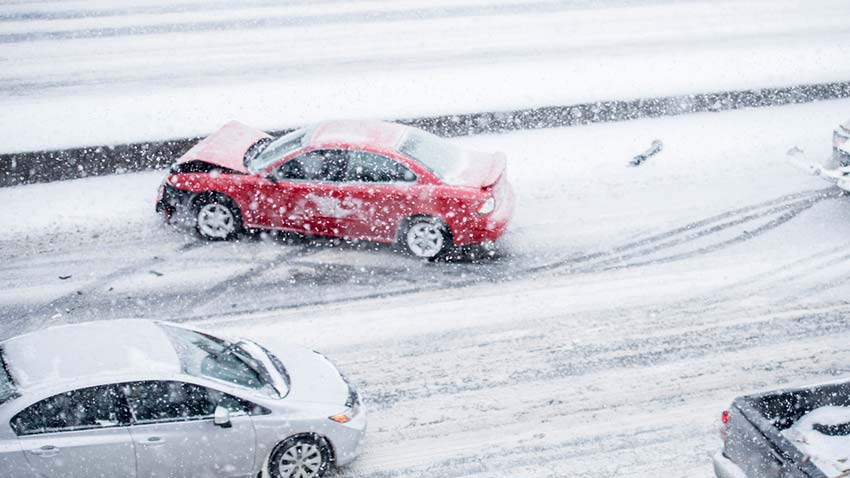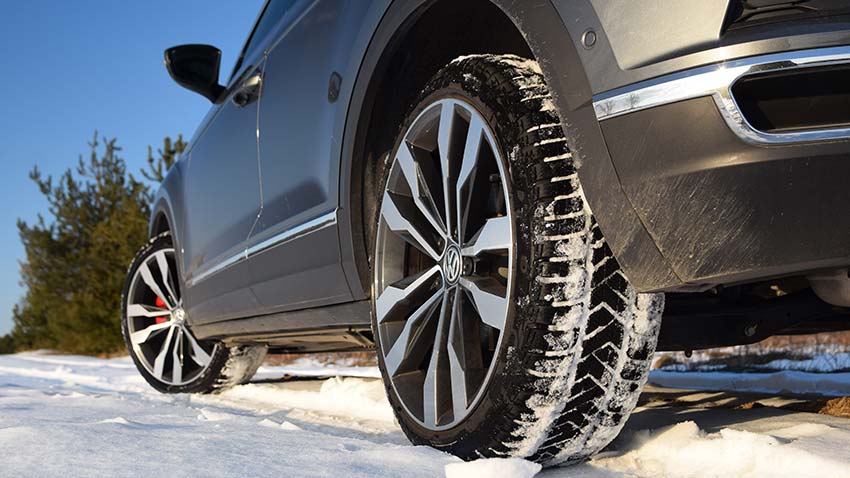Winter driving can be a bit more stressful in Ontario than in other regions with milder winters. Are you and your vehicle ready for winter?
You may think you are, but to be safe, check out our winter driving safety guide below. In it, you will find our top winter driving safety tips in Ontario.
By following these tips, you’ll be able to improve your safety while driving during harsh winter weather conditions and reduce the risk of experiencing an accident.
15 Top Winter Driving Safety Tips In Ontario
1. Keep Up To Date With Forecasts
Weather forecasts and severe weather warnings are helpful for planning your day’s activities and driving.
Be sure to check weather forecasts before venturing outside to get an idea about the weather and road conditions. In very bad weather, like an ice storm it’s best to postpone any non-urgent driving you had planned to do.
Road and weather conditions play a major role in traffic, too and thus are often reported in traffic reports on the radio.
Act accordingly if advised to avoid unnecessary driving due to snow-covered roads or heavy winds and rain.
2. Make Sure That Your Gas Tank Is At Least Half Full
The last thing you need while out on the road in poor weather is to run out of fuel. Be sure to keep an eye on that fuel gauge and top up your fuel tank when necessary.
3. Avoid Risky Driving
Speeding, overtaking other drivers, and taking turns too fast is always risky driving behaviour. Avoid passing other vehicles in bad weather, even if traffic seems light.
You will reduce the risk of a chain reaction collision by keeping a safe distance, staying at a safe speed, and avoiding lane changes.
Remember that if your distance is too small, you won’t be able to brake safely in time.
Driving too fast or carelessly can be deadly when combined with winter driving conditions, including freezing rain, slippery roads, and black ice.
Losing control of your vehicle and skidding on icy roads becomes a major problem. Poor visibility also limits your ability to react in an emergency. This can and often does lead to road accidents.
Beware Of Snow Plows
In addition, don’t attempt to pass a snowplow in operation. Blowing snow can affect your visibility.
It can take time to plow snow from roads, but rather be patient if you are stuck behind a snowplow.
To find out where snow plows are operating, you can visit: Ontario511

4. Keep Your Mobile Phone On And Charged
This is essential when undertaking any long drive but is crucial even for short drives in winter. If you get into an accident or get stuck somewhere, you want to make sure you have your phone with you so that you can call for help.
5. Do Not Call Or Text While Driving
If car trouble or weather-related driving difficulties, find a place to safely pull over before making a call. Alternatively, get your passenger to make the call for you.
Remember that inclement weather conditions may hamper efforts to get to you, so be prepared if you have to wait inside your vehicle for any time.
Remain calm and stay in your vehicle out of the way of traffic. This is not always easy when driving on highways in icy conditions so avoid this if possible.
Disengaging cruise control in an emergency on a slippery road can also be difficult. Avoid using cruise control on icy roads.
6. Stock Up On Safety Supplies
Unfortunately, bad weather goes hand-in-hand with difficult driving conditions. Road accidents and breakdowns are far more likely in winter weather, so stock up on safety supplies.
What To Keep In Your Car
Keep an emergency car kit in your trunk, including a first aid kit. Your emergency kit should include basic first-aid medical supplies. Keep some food that will not spoil, like dried fruit.
Other handy items that will be useful if stranded in poor weather include an aid kit, blanket and a flashlight. Check the flashlight and replace weak batteries.
Put together a winter survival kit, and you need never fear being stranded for a while on winter roads.
7. Keep Your Car Battery Healthy
When you prepare for winter, don’t overlook your battery. We recommend having your car battery checked and tested before the winter season starts so that you can replace your battery if it isn’t operating optimally.
Cold weather means your motor will need a fully charged battery to start your vehicle. So be sure to check the battery posts and the charging system too.
8. Replace Your Wipers If Necessary
Replace worn windshield wiper blades before the winter season with those designed for winter use.
Also, ensure there is enough winter washer fluid in the reservoir. It should be rated in the -40°C temperature range for winter use. It is a good idea to keep an extra jug of windshield washer fluid in your car in case you run out. Driving with a dirty or iced-up windshield is dangerous.

9. Get Some Winter Tires
One of the most important things to do when getting your car ready for winter is to put on winter tires. If you already have a set of winter tires, put them on before the winter weather becomes an issue.
Winter tires differ from “mud and snow” rated snow tires as they are designed for use in snowy winter conditions. These give the best winter traction performance, so don’t try to cut costs by not buying them.
How To Identify Winter Tires
To be sure that the tires you have are snow tires, check the side wall for a symbol of a mountain peak and a snowflake.
10. Check the Tread Of Older Tires
High-quality winter tires are essential for driving on snow and ice. They offer better traction on winter roads, and this will also increase fuel efficiency.
All-season tires are not well suited for our Canadian winter/
Don’t mix tires with different sizes or with different tread patterns. Four matching tires with good tread and traction are the safest option for winter driving.
Minimum Tread Your Tires Should Have For Winter Driving
Your tires should have at least 50% tread left to be safe on the road in winter. Get your tires checked by a professional to be sure they are safe.
11. Check Tire Pressure Regularly
Use the maximum pressure amount advised for your vehicle and your tires. Never exceed this.
Check your spare tire pressure regularly as well. You need to know that in the event of a blown tire, you can pop on the spare and keep going safely.
Ideal Conditions For Checking Tire Pressure
Check your tire pressure when it is cold. Tire pressure goes down in the cold, so this is the ideal setting for getting an accurate reading.
When checking tire pressure in a warm garage, you may get a higher reading that will not hold true once you hit the cold outdoors.
12. Check the Radiator, Thermostat, And Water Pump
Car troubles are an inconvenience at the best of times, but problems with your vehicle in winter can easily escalate the situation. Regular vehicle maintenance is crucial for safe winter driving.
What’s going on under your vehicle’s hood is crucial in winter driving. Make sure that your radiator and thermostat work properly. Inspect hoses for cracks and top up your coolant.
In winter, it is even more essential that your coolant/anti-freeze is the correct strength and level. Radiator hoses are prone to cracks and leaks over time. Always check these at the start of winter.
13. Check Your Exhaust System
Leaks in your exhaust system can send deadly carbon monoxide into your vehicle, which may prove fatal.
If those deadly carbon monoxide fumes make their way into your car, you may become overcome by them very quickly. You may become disorientated and lose consciousness before you realize what is happening.
This can also lead to a car accident, endangering other road users’ lives as well.
14. Brake Safety
Brakes need to be kept in good working order, especially in winter. Have your brakes examined by a certified technician and replace worn brake pads if advised to do so.
15. Take A Winter Driving Course
A winter driving course may also be advisable to be sure you’re totally confident when you hit the road conditions this winter.
An advanced driving course will equip you with all the knowledge and skills you need to be safe on Ontario roads in winter.
Conclusion
Bad weather conditions in winter can lead to some very unsafe road conditions and make it easier to lose control of a vehicle. That’s why it’s crucial to be extra careful when driving in winter and ensure your vehicle is well-maintained and in good condition. Doing so will help reduce your risk of getting into an accident.
Follow the winter driving tips mentioned above to avoid road accidents in Ontario during the winter season.
If you or a loved one are in an accident and sustain an injury, contact our personal injury lawyers. We can help you with your accident benefits claim to ensure you get the compensation you deserve.




